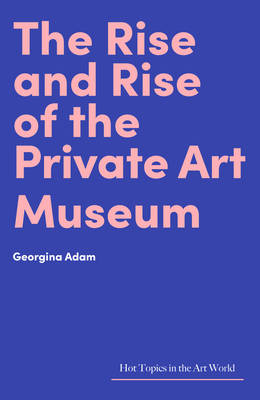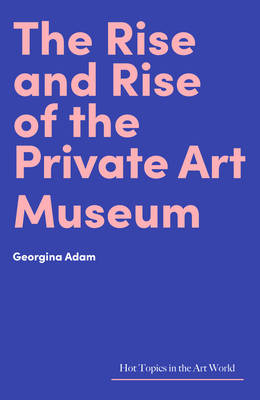
Door een staking bij bpost kan je online bestelling op dit moment iets langer onderweg zijn dan voorzien. Dringend iets nodig? Onze winkels ontvangen jou met open armen!
- Afhalen na 1 uur in een winkel met voorraad
- Gratis thuislevering in België vanaf € 30
- Ruim aanbod met 7 miljoen producten
Door een staking bij bpost kan je online bestelling op dit moment iets langer onderweg zijn dan voorzien. Dringend iets nodig? Onze winkels ontvangen jou met open armen!
- Afhalen na 1 uur in een winkel met voorraad
- Gratis thuislevering in België vanaf € 30
- Ruim aanbod met 7 miljoen producten
Zoeken
Omschrijving
The private museum has become a phenomenon of the 21st century. There are some 400 of them around the world, and an astonishing 70% of those devoted to contemporary art were founded in the past 20 years. Although private museums have been accused of being tax-evading vanity projects or 'tombs for trophies, ' the picture is far more complex. Georgina Adam's investigation into this extraordinary proliferation, based on her recent visits to over 50 private spaces across the US, Europe, China, and elsewhere, delves into the reasons behind this boom, the different motivations of collectors to display their art in public, and the various ways in which the institutions are financed. Private museums can add greatly to the cultural life of a community, giving a platform to emerging artists, supplying educational programmes, and revitalising declining or neglected regions. But their relationship with public institutions can also be problematic. Should private museums step in to fill a gap left by declining public investment in culture, and what are the implications for society and the arts? At a time of crisis in the museums sector, this book is an essential and thought-provoking read.
Specificaties
Betrokkenen
- Auteur(s):
- Uitgeverij:
Inhoud
- Aantal bladzijden:
- 104
- Taal:
- Engels
- Reeks:
Eigenschappen
- Productcode (EAN):
- 9781848223844
- Verschijningsdatum:
- 25/02/2022
- Uitvoering:
- Hardcover
- Formaat:
- Genaaid
- Afmetingen:
- 135 mm x 203 mm
- Gewicht:
- 226 g

Alleen bij Standaard Boekhandel
+ 64 punten op je klantenkaart van Standaard Boekhandel
Beoordelingen
We publiceren alleen reviews die voldoen aan de voorwaarden voor reviews. Bekijk onze voorwaarden voor reviews.











